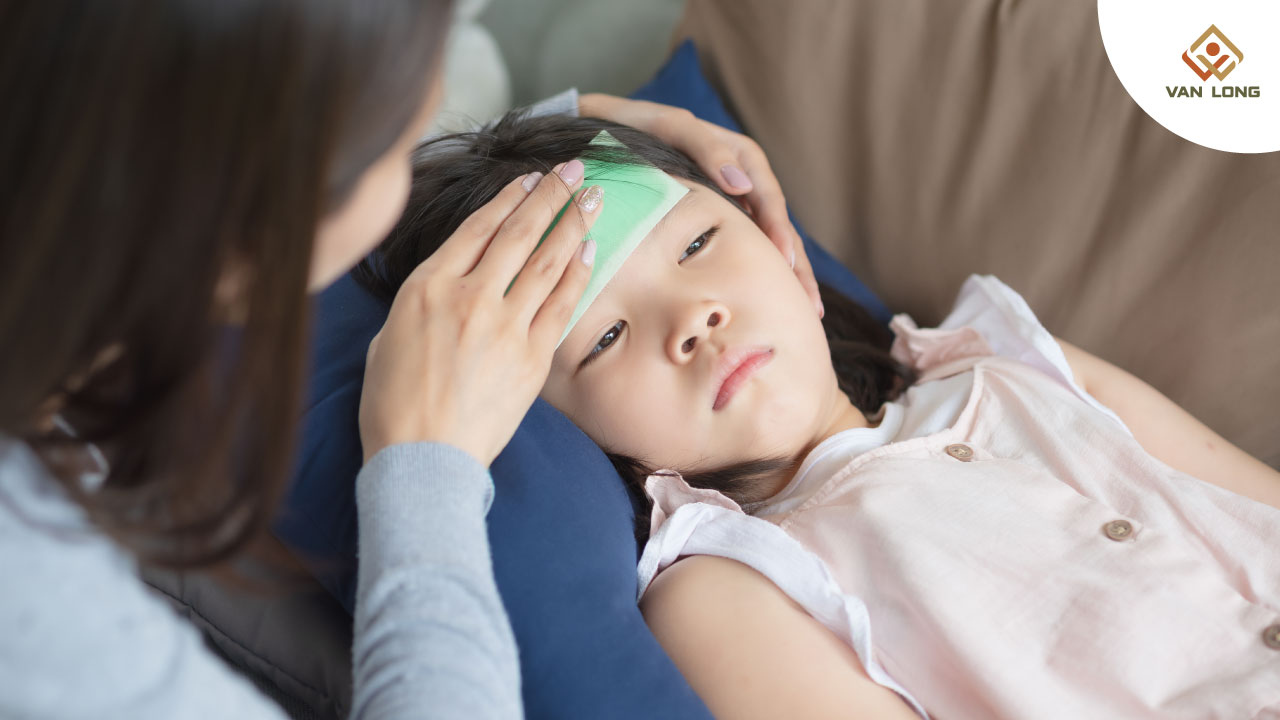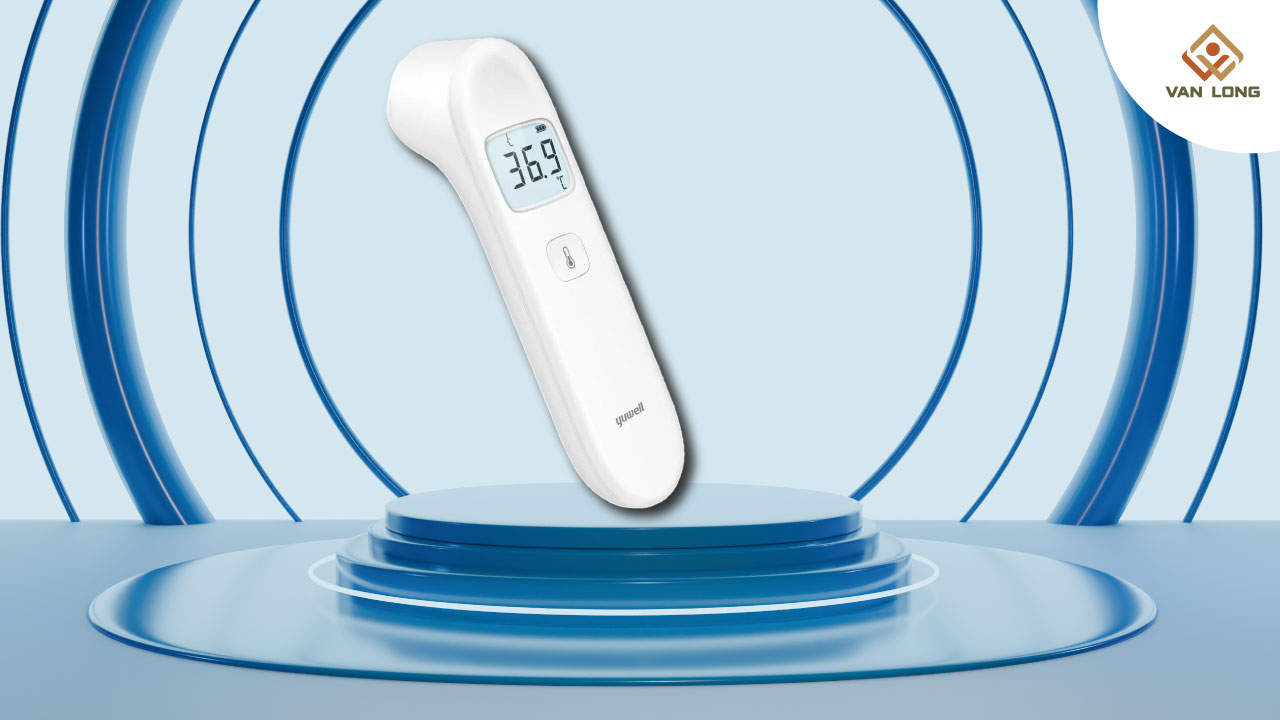Viêm tiểu phế quản là một trong những bệnh lý hô hấp phổ biến và nguy hiểm ở trẻ nhỏ, đặc biệt là trẻ dưới 2 tuổi. Đây là tình trạng viêm nhiễm ở các ống phế quản nhỏ trong phổi – nơi khí được trao đổi – gây tắc nghẽn, phù nề và tiết nhiều chất nhầy. Nguyên nhân chủ yếu do virus hợp bào hô hấp (RSV), ngoài ra còn có các loại virus khác như Rhinovirus, Adenovirus, hoặc cúm.

Hệ miễn dịch của trẻ nhỏ chưa hoàn thiện, đồng thời đường thở còn hẹp và ngắn, khiến cho khi niêm mạc bị phù nề hay tiết dịch, luồng khí rất dễ bị cản trở. Virus xâm nhập qua mũi họng, sau đó di chuyển sâu xuống các tiểu phế quản, gây viêm cấp tính. Hậu quả là đường thở bị hẹp lại, cản trở thông khí và gây ra các triệu chứng điển hình như:
Đây là những biểu hiện cần được phụ huynh theo dõi sát, đặc biệt là thân nhiệt, vì sốt cao kéo dài là một trong những yếu tố làm nặng bệnh và có thể dẫn đến co giật ở trẻ.
Nhiều cha mẹ nhầm lẫn giữa cảm lạnh và viêm tiểu phế quản, vì cả hai đều có các triệu chứng sốt, ho, sổ mũi. Tuy nhiên, viêm tiểu phế quản thường nghiêm trọng hơn, và cần phân biệt dựa vào:
|
Đặc điểm |
Cảm lạnh |
Viêm tiểu phế quản |
|
Thân nhiệt |
Sốt nhẹ hoặc không sốt |
Sốt cao liên tục |
|
Hô hấp |
Không khò khè |
Có khò khè, rít |
|
Thời gian |
Tự khỏi sau 5–7 ngày |
Kéo dài và nặng dần |
|
Biểu hiện toàn thân |
Trẻ vẫn chơi, bú |
Mệt mỏi, bỏ bú |
Chính vì vậy, việc theo dõi nhiệt độ cơ thể liên tục – đặc biệt là trong giai đoạn đầu của bệnh – sẽ giúp cha mẹ phát hiện sớm dấu hiệu chuyển nặng và đưa trẻ đi khám kịp thời.

Sốt là phản ứng miễn dịch tự nhiên khi cơ thể chống lại virus. Tuy nhiên, với trẻ nhỏ, sốt cao trên 38,5°C kéo dài có thể gây co giật, mất nước, thậm chí dẫn đến biến chứng thần kinh nếu không xử lý đúng. Việc kiểm tra thân nhiệt đều đặn giúp:
Với tần suất đo nhiệt độ liên tục (2–3 tiếng/lần khi sốt), một thiết bị tiện lợi, nhanh chóng như nhiệt kế hồng ngoại sẽ giúp cha mẹ theo dõi dễ dàng mà không làm trẻ tỉnh giấc hay khó chịu.
Việc chọn một chiếc nhiệt kế không chỉ đơn giản là mua theo giá tiền hay thương hiệu. Với trẻ nhỏ, đặc biệt là trẻ đang trong giai đoạn điều trị các bệnh viêm đường hô hấp như viêm tiểu phế quản, việc chọn đúng loại nhiệt kế hồng ngoại là vô cùng quan trọng để theo dõi sát thân nhiệt, từ đó có hướng can thiệp kịp thời.
Một số tiêu chí cha mẹ cần lưu ý:
Các loại nhiệt kế hồng ngoại đo trán hiện nay như Yuwell, Microlife, Omron đều được tích hợp cảm biến hiện đại, có khả năng hiển thị kỹ thuật số, dễ đọc, và phù hợp với cha mẹ không có kiến thức chuyên môn sâu về y tế.

Viêm tiểu phế quản ở trẻ nhỏ không đơn thuần chỉ là một cơn sốt. Bệnh thường đi kèm cơn sốt cao kéo dài, và nếu không được xử lý đúng cách có thể dẫn đến:
Do đó, trong quá trình chăm sóc tại nhà, đo thân nhiệt đều đặn bằng nhiệt kế điện tử đo trán giúp phụ huynh:
Hơn nữa, khi bệnh bước vào giai đoạn phục hồi, việc duy trì đo nhiệt độ sẽ giúp cha mẹ xác định liệu trẻ đã thật sự hết sốt, hay chỉ là hạ sốt tạm thời.
Trong giai đoạn trẻ sốt cao do viêm đường hô hấp, nhiều cha mẹ có thói quen đo nhiệt độ sai thời điểm hoặc sai cách, dẫn đến sai số trong kết quả và xử lý không chính xác. Dưới đây là những lỗi phổ biến:
|
Sai lầm thường gặp |
Hệ quả |
Cách khắc phục |
|
Đo nhiệt độ khi trẻ vừa khóc |
Cho kết quả cao giả |
Đợi trẻ bình tĩnh 5–10 phút |
|
Đo khi trẻ vừa đắp chăn dày |
Kết quả tăng do ảnh hưởng từ nhiệt môi trường |
Cởi bỏ chăn, đợi vài phút trước khi đo |
|
Dùng nhiệt kế kẹp nách khi trẻ cử động nhiều |
Kết quả thiếu chính xác |
Chuyển sang dùng nhiệt kế hồng ngoại đo trán |
|
Không làm sạch đầu cảm biến sau mỗi lần dùng |
Lây nhiễm chéo hoặc sai số đo |
Vệ sinh bằng cồn sát khuẩn sau mỗi lần đo |
Đặc biệt với trẻ bị viêm tiểu phế quản – thường ho, khó chịu và quấy khóc – việc đo nhanh, không xâm lấn bằng nhiệt kế điện tử đo trán sẽ giúp theo dõi hiệu quả mà không làm trẻ khó chịu hơn.

Viêm tiểu phế quản là bệnh lý không hiếm gặp ở trẻ dưới 2 tuổi, đặc biệt khi thời tiết giao mùa hoặc trong môi trường đông người. Dù phần lớn là do virus và có thể tự hồi phục, nhưng nếu không theo dõi sát – đặc biệt là diễn tiến thân nhiệt – bệnh có thể trở nặng rất nhanh.
Nhiệt kế hồng ngoại không chỉ là công cụ đo thân nhiệt, mà còn là trợ thủ đắc lực trong việc đánh giá tình trạng sốt, hiệu quả điều trị và nguy cơ chuyển nặng. Việc lựa chọn đúng thiết bị, sử dụng đúng cách và hiểu đúng về bệnh học sẽ giúp cha mẹ yên tâm hơn trong hành trình chăm sóc con, đặc biệt khi không thể đưa trẻ đến bệnh viện ngay lập tức.
Hãy coi chiếc nhiệt kế trong nhà như một thiết bị y tế không thể thiếu, nhất là trong những ngày con bạn bị sốt cao do viêm đường hô hấp. Theo dõi đều đặn, phản ứng kịp thời – chính là chìa khóa giúp trẻ phục hồi nhanh và tránh xa biến chứng nguy hiểm.
——————————
CÔNG TY TNHH PHÁT TRIỂN THƯƠNG MẠI DỊCH VỤ VÂN LONG
YOUR NEEDS - OUR BUSINESS
Hotline: (028) 3526 2468 / 098.484.0440
Email: cskh@vl-groups.com
Website: www.vl-groups.com
Địa chỉ:
- Văn phòng HCM: Tòa nhà Fosco, D35 + D36 - 40 Bà Huyện Thanh Quan, P.Xuân Hòa, TP. HCM
- Trung tâm bảo hành: 373/14 Nguyễn Kiệm, P.Đức Nhuận, TP.HCM
- Văn phòng Hà Nội: Khu VP Hồng Hà, 38.3/1 Ngõ 109 Trường Chinh, P.Phương Liệt, Q.Thanh Xuân, Hà Nội
- Kho Tổng: 938 Quốc Lộ 1A, P.Linh Xuân, TP.HCM
🌼 Shopee: https://shopee.vn/vanlonggroups
🌼 Tiktok: https://www.tiktok.com/@thietbichamsocsuckhoe
🌼 Tiki: https://tiki.vn/cua-hang/cham-soc-suc-khoe-van-long
🌼 Lazada: https://www.lazada.vn/shop/van-long-our-needs-your-business